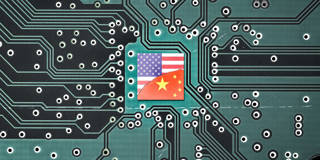OnPoint Subscriber Exclusive
Longer Reads provide in-depth analysis of the ideas and forces shaping politics, economics, international affairs, and more.

Managing the Sino-American AI Race
The official Sino-American dialogue on AI governance will continue to face serious political and institutional constraints that will limit what is possible. But much more could be achieved through unofficial channels that connect experts from across both societies.
NEW HAVEN – Central to the Cold War between the United States and the Soviet Union was a rivalry to develop the technologies of the future. First came the race to deploy nuclear weapons on intercontinental missiles. Then came the space race. Then came US President Ronald Reagan’s “Star Wars” program, which seemed to launch a new race to build missile-defense systems. But it soon became clear that the Soviet economy had fallen decisively behind.